Integrated Zoning Protection of Urban Remains from Perspective of Sustainable Development—A Case Study of Changchun
Abstract
:1. Introduction
- Explaining the evolutionary characteristics of the planning and development of the pseudo-Manchu Xinjing from a global perspective.
- Constructing a “district-axis-point” conservation model for urban remains.
- The development status of urban relics protection from an international perspective
- Analyzing the current situation and spatial distribution of the existing architectural relics in Changchun.
- Three suggestions on the sustainable development of urban planning and remains in Changchun
2. Materials and Methods
2.1. Data Sources
2.2. Methods
3. A Global Perspective on Urban Planning of Xinjing of Pseudo-Manchukuo in the Same Period
3.1. Study Area
3.2. Urban Spatial Structure
3.3. Urban Function Zoning
3.4. Urban Architectural Style
4. Results and Discussion
4.1. Evolutionary Features of the Xinjing Planning of Pseudo-Manchukuo
4.1.1. Urban Road Network System and Spatial Structure Are Basically Preserved
4.1.2. Urban Green Space System and Function Zoning Turnover
4.2. Current Status and Spatial Distribution Characteristics of Architectural Remains of the Pseudo-Manchukuo Period
4.3. The Construction of Remains Protection Areas Based on Urban Functional Areas
4.4. The Development of Urban Monuments Conservation in International Perspective
4.5. Suggestions for the Overall Conservation of Urban Remains in Changchun
4.5.1. Proposal to Establish an Overall Protection System for Urban Planning Areas
4.5.2. Proposal to Establish a “District-Axis-Point” Protection Model for Urban Planning and Architectural Heritage
4.5.3. Proposal to Encourage the Effective Functional Restoration of Urban Planning and Construction Function Areas
5. Conclusions
Author Contributions
Funding
Institutional Review Board Statement
Informed Consent Statement
Data Availability Statement
Conflicts of Interest
References
- Alrawi, A.K.; Qasim, S.S. Urban Management of City Centers the Road to The Sustainable Development (Sustainable Land Use Management). IOP Conf. Ser. Earth Environ. Sci. 2022, 961, 012090. [Google Scholar] [CrossRef]
- Michalina, D.; Mederly, P.; Diefenbacher, H.; Held, B. Sustainable Urban Development: A Review of Urban Sustainability Indicator Frameworks. Sustainability 2021, 13, 9348. [Google Scholar] [CrossRef]
- Kowarik, I.; Fischer, L.K.; Kendal, D. Biodiversity Conservation and Sustainable Urban Development. Sustainability 2020, 12, 4964. [Google Scholar] [CrossRef]
- Ivanova, G.N. Standardization of sustainable urban development measurements. J. Phys. Conf. Ser. 2021, 1889, 032046. [Google Scholar] [CrossRef]
- Okano, H.; Samson, D. Cultural urban branding and creative cities: A theoretical framework for promoting creativity in the public spaces. Cities 2010, 27, S10–S15. [Google Scholar] [CrossRef]
- Revell, T. City ruins can tug at purse strings. New Sci. 2017, 236, 14. [Google Scholar] [CrossRef]
- Ren-Zhi, H. Ancient city ruins in the deserts of the Inner Mongolia Autonomous Region of China. J. Hist. Geogr. 1985, 11, 241–252. [Google Scholar] [CrossRef]
- Sorbo, E. Ruins of Memory: A Sustainable Conservation for the Material and Immaterial Values of the Former Psychiatric Hospitals in Italy. Procedia Eng. 2016, 161, 2198–2202. [Google Scholar] [CrossRef]
- Zhou, Y.; Sun, Z.-E.; Gao, Q. Performance-based fire Protection Design of Ruins Protection Pavilion Based on Air-supported Membrane Structure. Procedia Eng. 2016, 135, 486–494. [Google Scholar] [CrossRef] [Green Version]
- Davies, T.; Isakjee, A. Ruins of Empire: Refugees, race and the postcolonial geographies of European migrant camps. Geoforum 2018, 102, 214–217. [Google Scholar] [CrossRef]
- Akcay, C.; Sayin, B.; Yildizlar, B. The conservation and repair of historical masonry ruins based on laboratory analyses. Constr. Build. Mater. 2017, 132, 383–394. [Google Scholar] [CrossRef]
- Kargas, A.; Loumos, G.; Mamakou, I.; Varoutas, D. Digital Routes in Greek History’s Paths. Heritage 2022, 5, 742–755. [Google Scholar] [CrossRef]
- Abbott, C. George Washington’s Final Battle: The Epic Struggle to Build a Capital City and a Nation. J. Am. Hist. 2021, 108, 365. [Google Scholar] [CrossRef]
- Brown, T.J. Building Washington: Engineering and Construction of the New Federal City, 1790–1840. J. Am. Hist. 2019, 106, 455–456. [Google Scholar] [CrossRef]
- Yglesias, C. To Build a Metaphor: L’Enfant’s Design for the City of Washington. J. Plan. Hist. 2019, 18, 172–195. [Google Scholar] [CrossRef]
- Yglesias, C. L’Enfant’s Washington: The figure of the President in the capital of the Republic. Plan. Perspect. 2021, 18, 172–195. [Google Scholar]
- Mees, P. A centenary review of transport planning in Canberra, Australia. Prog. Plan. 2014, 87, 1–32. [Google Scholar] [CrossRef]
- Banks, J.C.; Brack, C.L. Canberra’s Urban Forest: Evolution and planning for future landscapes. Urban For. Urban Green. 2003, 1, 151–160. [Google Scholar] [CrossRef]
- Stangl, P. Restoring Berlin’s Unter den Linden: Ideology, world view, place and space. J. Hist. Geogr. 2006, 32, 352–376. [Google Scholar] [CrossRef]
- Barranha, H.; Caldas, J.V.; Da Silva, R.N.N. Translating heritage into museums: Two architectural strategies inside Lisbon Castle. J. Cult. Heritage Manag. Sustain. Dev. 2017, 7, 33–47. [Google Scholar] [CrossRef]
- Akira, K. Pseudo-Manchukuo Capital Planning, 1st ed.; Social Science Literature Press: Beijing, China, 2011; pp. 102–200. ISBN 978-7-5097-2334-0. [Google Scholar]
- Yang, Y. Changchun Modern Architecture Illustrated 1932–1945, 1st ed.; Jilin Literature and History Press: Changchun, China, 2011; pp. 58–108. ISBN 7-5472-0687-4. [Google Scholar]
- Yang, J.; Mo, W. Changchun Urban Planning and Architecture Research in the Pseudo-Manchukuo Period, 1st ed.; Northeast Normal University Press: Changchun, China, 2008; pp. 128–200. ISBN 978-7-5602-5111-0. [Google Scholar]
- Guo, Y.-R.; Bai, Y.-Q.; Li, C.-N.; Shao, Y.-H.; Ye, Y.-F.; Jiang, C.-Z. Reverse nearest neighbors Bhattacharyya bound linear discriminant analysis for multimodal classification. Eng. Appl. Artif. Intell. 2020, 97, 104033. [Google Scholar] [CrossRef]
- Lee, W.J.; Mendis, G.P.; Triebe, M.J.; Sutherland, J.W. Monitoring of a machining process using kernel principal component analysis and kernel density estimation. J. Intell. Manuf. 2019, 31, 1175–1189. [Google Scholar] [CrossRef]
- Polajzer, B.; Brezovnik, R.; Ritonja, J. Evaluation of Load Frequency Control Performance Based on Standard Deviational Ellipses. IEEE Trans. Power Syst. 2016, 32, 2296–2304. [Google Scholar] [CrossRef]
- Thornton, M.A. Constructing Empire: The Japanese in Changchun, 1905–1945. J. Asian Stud. 2020, 79, 265–266. [Google Scholar] [CrossRef] [Green Version]
- Guo, Q. Changchun: Unfinished capital planning of Manzhouguo, 1932–1942. Urban Hist. 2004, 31, 100–117. [Google Scholar] [CrossRef]
- Wang, H.; Fidrmuc, J.; Tian, Y. Growing against the background of colonization? Chinese labor market and FDI in a historical perspective. Int. Rev. Econ. Financ. 2020, 69, 1018–1031. [Google Scholar] [CrossRef] [Green Version]
- Glaser, M.; Krizek, K.J. Can street-focused emergency response measures trigger a transition to new transport systems? Exploring evidence and lessons from 55 US cities. Transp. Policy 2021, 103, 146–155. [Google Scholar] [CrossRef]
- Antupit, S.; Gray, B.; Woods, S. Steps ahead: Making streets that work in Seattle, Washington. Landsc. Urban Plan. 1996, 35, 107–122. [Google Scholar] [CrossRef]
- Heinz, S.; Raymundo, M.; Tim, B. A spatiotemporal urban metabolism model for the Canberra suburb of Braddon in Australia. J. Clean. Prod. 2020, 265, 121770. [Google Scholar] [CrossRef]
- Wang, H.; Li, B.; Yi, T.; Wu, J. Heterogeneous Urban Thermal Contribution of Functional Construction Land Zones: A Case Study in Shenzhen, China. Remote Sens. 2022, 14, 1851. [Google Scholar] [CrossRef]
- Hickman, C. ‘To brighten the aspect of our streets and increase the health and enjoyment of our city’: The National Health Society and urban green space in late-nineteenth century London. Landsc. Urban Plan. 2013, 118, 112–119. [Google Scholar] [CrossRef]
- Zhang, Z.; Paschalis, A.; Mijic, A. Planning London’s green spaces in an integrated water management approach to enhance future resilience in urban stormwater control. J. Hydrol. 2021, 597, 126. [Google Scholar] [CrossRef]
- Holy, W.; Burchell, B. Does public space have to be green to improve well-being? An analysis of public space across Greater London and its association to subjective well-being. Cities 2022, 125, 103569. [Google Scholar] [CrossRef]
- Cao, K.; Guo, H.; Zhang, Y. Comparison of Approaches for Urban Functional Zones Classification Based on Multi-Source Geospatial Data: A Case Study in Yuzhong District, Chongqing, China. Sustainability 2019, 11, 660. [Google Scholar] [CrossRef] [Green Version]
- Yang, C.; He, X.; Yan, F.; Yu, L.; Bu, K.; Yang, J.; Chang, L.; Zhang, S. Mapping the Influence of Land Use/Land Cover Changes on the Urban Heat Island Effect—A Case Study of Changchun, China. Sustainability 2017, 9, 312. [Google Scholar] [CrossRef] [Green Version]
- Aydin, C. Kenkoku University and the Experience of Pan-Asianism: Education in the Japanese Empire by Yuka Hiruma Kishida. J. Jpn. Stud. 2021, 47, 228–232. [Google Scholar] [CrossRef]
- Smolianinova, T.A.; Kim, A.A. The Formation of European Settlements in China in the Second Half of the 19th–the First Half of the 20th Century and the Features of Their Development in Manchuria. IOP Conf. Ser. Mater. Sci. Eng. 2021, 1079, 022047. [Google Scholar] [CrossRef]
- An, Y.; Liu, S.; Sun, Y.; Shi, F.; Zhao, S.; Liu, Y.; Li, M. A partitioning approach for regional sustainability based on economic development indicators and ecological values for China. J. Nat. Conserv. 2022, 67, 126179. [Google Scholar] [CrossRef]
- Bai, L.-M.; Feng, X.-H.; Sun, R.-F.; Gao, H. [Spatial and temporal responses of habitat quality to urbanization: A case study of Changchun City, Jilin Province, China]. Ying Yong Sheng Tai Xue Bao J. Appl. Ecol. 2020, 31, 1267–1277. [Google Scholar]
- Chen, C.-C.; Fu, C.-C. Pre-World War II Manchurian Ancient Architectural Research by Japanese Architectural Historian Murata Jiro. J. Asian Arch. Build. Eng. 2016, 15, 177–184. [Google Scholar] [CrossRef] [Green Version]
- Tceluiko, D.S. The architecture of banking institutions in Changchun city (1932–1945). Mater. Sci. Eng. 2020, 962, 032078. [Google Scholar] [CrossRef]
- Zadvernyuk, L.V. Historical Formation of Traditional Manchurian Housing. Bull. Pnu 2014, 33, 83–92. [Google Scholar]
- Sabri, R. From an Inconsequential Legacy to National Heritage: Revisiting the Conservation Approaches Towards the Ottoman Buildings in British Colonial Cyprus. Conserv. Manag. Archaeol. Sites 2017, 19, 55–81. [Google Scholar] [CrossRef]
- Muhammad, A.C.Y.; Ahmad, G.A. Architecture typology of a British-era colonial schools at the World Heritage Sites of Georgetown and Melaka: Impact on heritage building conservation sector. SHS Web Conf. 2018, 45, 1004. [Google Scholar]
- Cortella, L.; Albino, C.; Tran, Q.-K.; Froment, K. 50 years of French experience in using gamma rays as a tool for cultural heritage remedial conservation. Radiat. Phys. Chem. 2020, 171, 108726. [Google Scholar] [CrossRef]
- Arslanov, R.A.; Linkova, E.V.; Kozmenko, V.M. The influence of the French conservatives to the reception of the image of Napoleon I in Russia (on the example of the study of the epistolary heritage of Joseph de Maistre) (Review). Bylye Gody 2018, 47, 130–142. [Google Scholar]
- Li, Y.; Li, X.; Jiang, Q.; Zhou, Q. Historical Study and Conservation Strategies of “Tianzihao” Colony (Nanjing, China)—Architectural Heritage of the French Catholic Missions in the Late 19th Century. Buildings 2021, 11, 176. [Google Scholar] [CrossRef]
- Reyes, S.; Miyazaki, A.; Yiu, E.; Saito, O. Enhancing Sustainability in Traditional Agriculture: Indicators for Monitoring the Conservation of Globally Important Agricultural Heritage Systems (GIAHS) in Japan. Sustainability. 2020, 12, 5656. [Google Scholar] [CrossRef]
- Clopot, C. Heritage Conservation and Japan’s Cultural Diplomacy: Heritage, National Identity and National Interest. Anthropol. J. Eur. Cult. 2016, 25, 164–166. [Google Scholar] [CrossRef]
- Ohsuga, T. Network building in Japan, China and Korea for the conservation of paper-based cultural heritage within the region. Stud. Conserv. 2014, 59, S258–S259. [Google Scholar] [CrossRef]
- Okubo, T. Traditional Knowledge of Disaster-Resilient Designs in World Cultural Heritage, Japan: For Consisting Cultural Conservation and Disaster Mitigation. Abitare La Terra 2018, 17, 32–33. [Google Scholar]
- Han, J.-S.N. Conserving the Heritage of Shame: War Remembrance and War-related Sites in Contemporary Japan. J. Contemp. Asia 2012, 42, 493–513. [Google Scholar] [CrossRef]
- Charlie, Q.; Xue, J. Japanese modernity deviated: Its importation and legacy in the Southeast Asian architecture since the 1970s. Habitat Int. 2014, 44, 227–236. [Google Scholar] [CrossRef]
- Huang, G.; Gu, J.-D. An international workshop on Conservation of Cultural Heritage held at the City University of Macau, China. Int. Biodeterior. Biodegrad. 2021, 164, 105297. [Google Scholar] [CrossRef]
- Min, Q.; Zhang, B. Research Progress in the Conservation and Development of China-Nationally Important Agricultural Heritage Systems (China-NIAHS). Sustainability 2019, 12, 126. [Google Scholar] [CrossRef] [Green Version]
- Wu, J.; Wu, G.; Zheng, T.; Zhang, X.; Zhou, K. Value capture mechanisms, transaction costs, and heritage conservation: A case study of Sanjiangyuan National Park, China. Land Use Policy 2019, 90, 104246. [Google Scholar] [CrossRef]
- Barnard, A. Rock art: Southern Africa’s cultural treasure. Historia 2012, 57, 188–225. [Google Scholar]
- Zuo, D.; Li, C.; Lin, M.; Chen, P.; Kong, X. Tourism, Residents Agent Practice and Traditional Residential Landscapes at a Cultural Heritage Site: The Case Study of Hongcun Village, China. Sustainability 2022, 14, 4423. [Google Scholar] [CrossRef]
- Broadstock, D.; Ji, Q.; Managi, S.; Zhang, D. Pathways to carbon neutrality: Challenges and opportunities. Resour. Conserv. Recycl. 2021, 169, 105472. [Google Scholar] [CrossRef]
- De La Peña, L.; Guo, R.; Cao, X.; Ni, X.; Zhang, W. Accelerating the energy transition to achieve carbon neutrality. Resour. Conserv. Recycl. 2021, 177, 105957. [Google Scholar] [CrossRef]
- Zhao, X.; Ma, X.; Chen, B.; Shang, Y.; Song, M. Challenges toward carbon neutrality in China: Strategies and countermeasures. Resour. Conserv. Recycl. 2021, 176, 105959. [Google Scholar] [CrossRef]
- Lee, K.; Huang, C.; Chuang, S.; Huang, C.; Tsai, W.; Hsieh, C. Energy Saving and Carbon Neutrality in the Funeral Industry. Energies 2022, 15, 1457. [Google Scholar] [CrossRef]
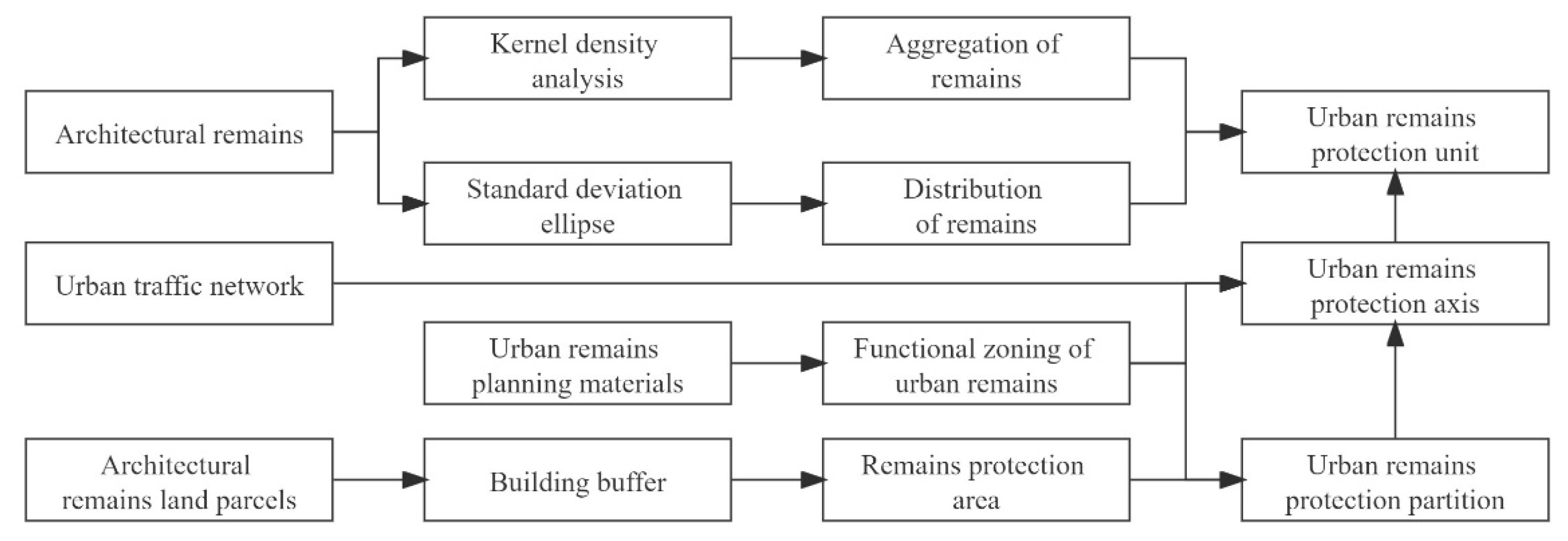

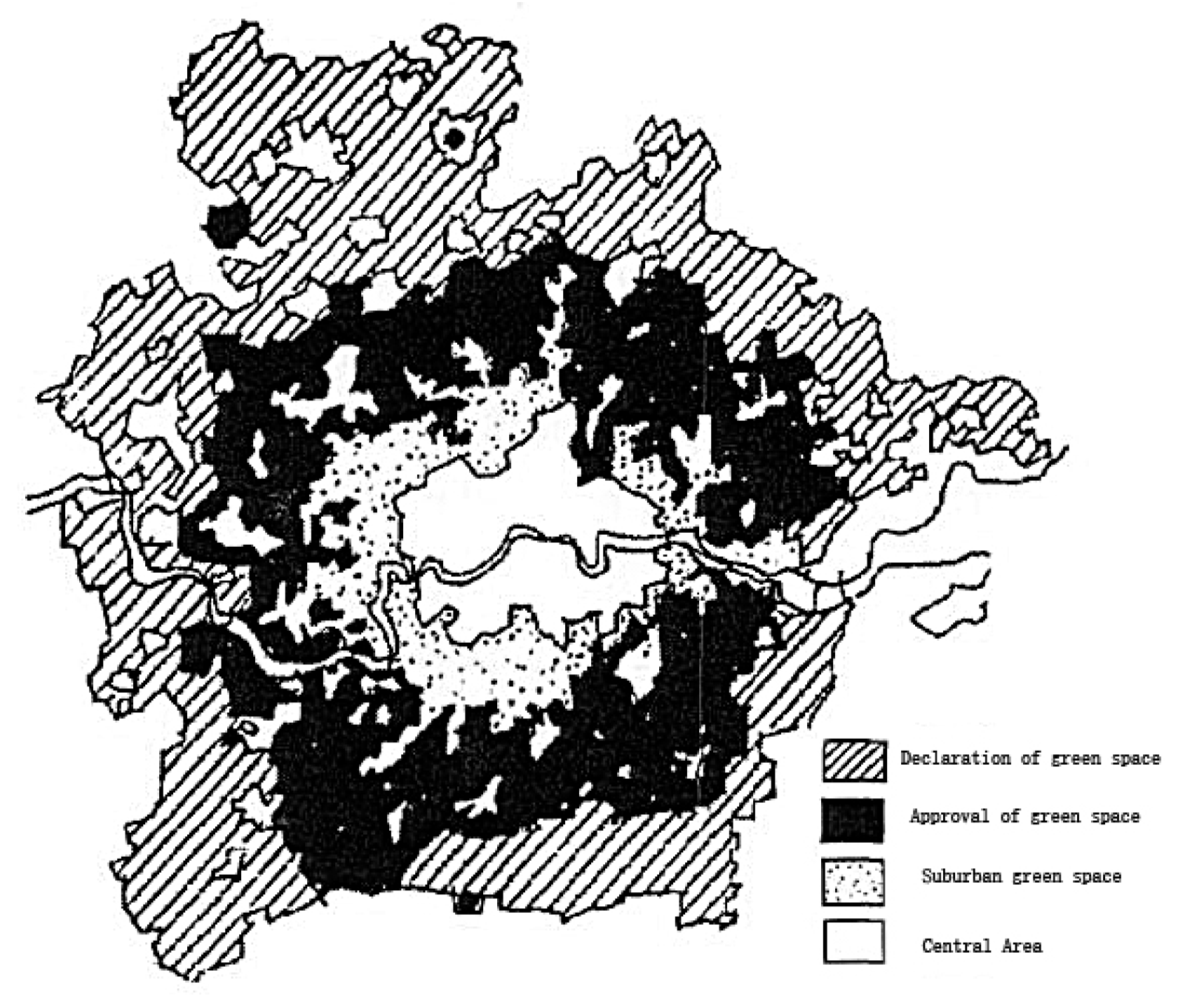
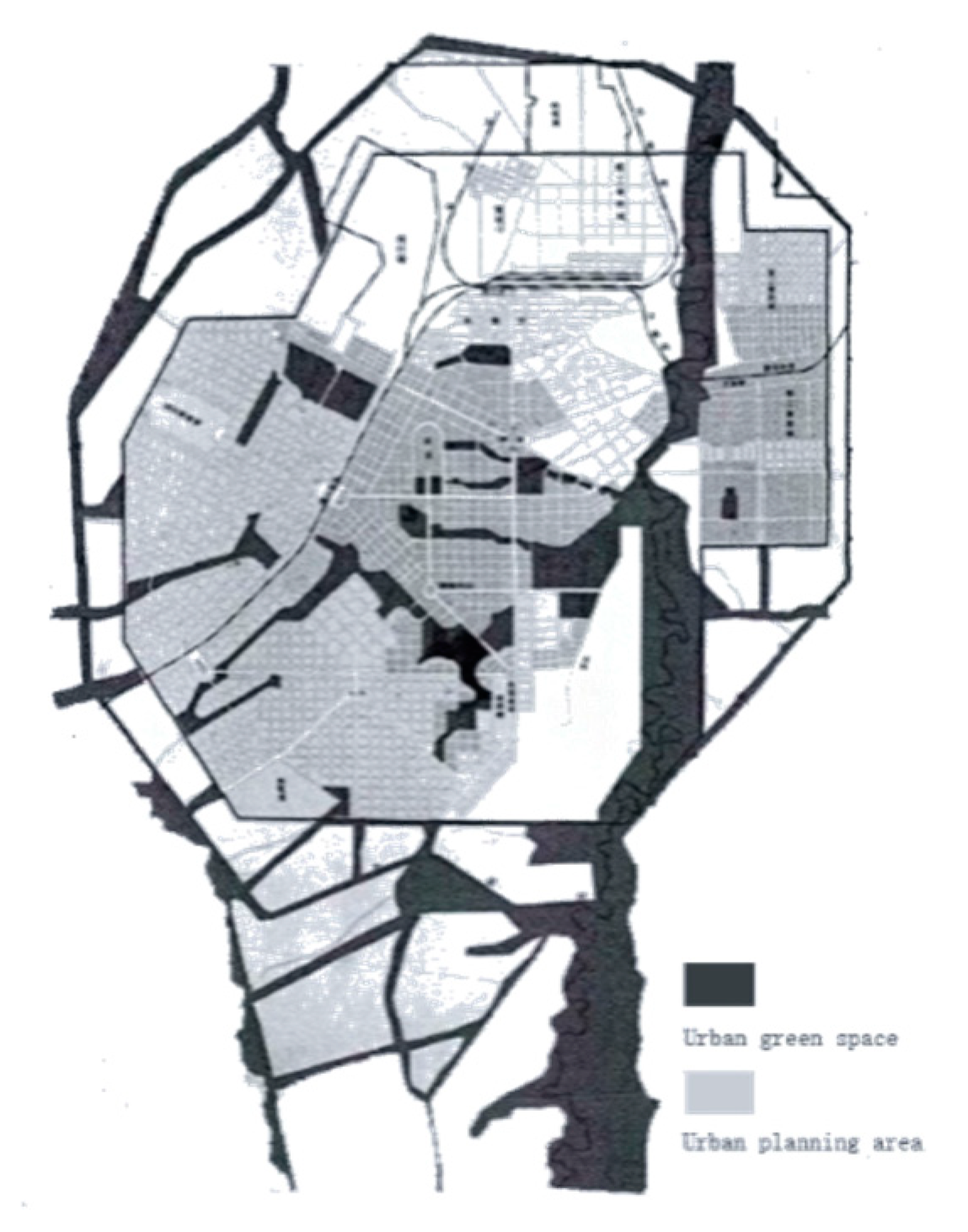

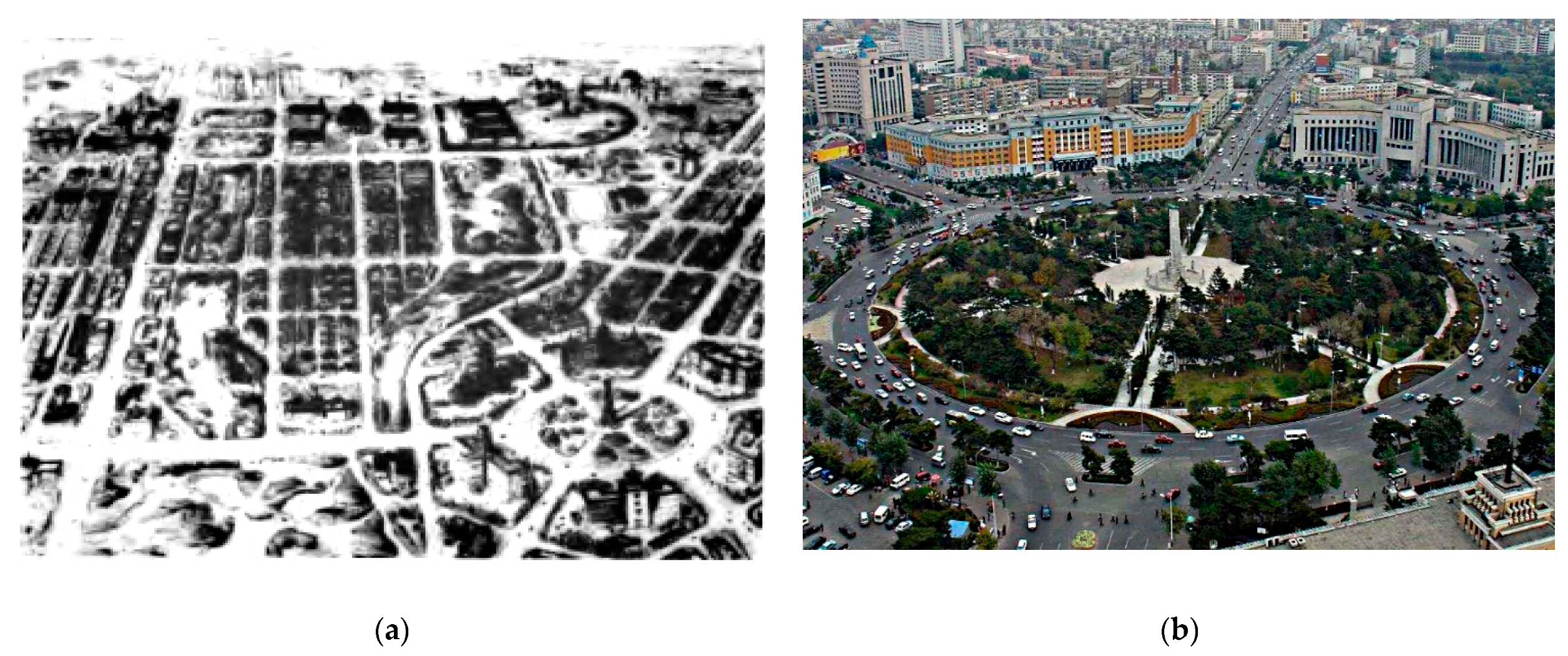

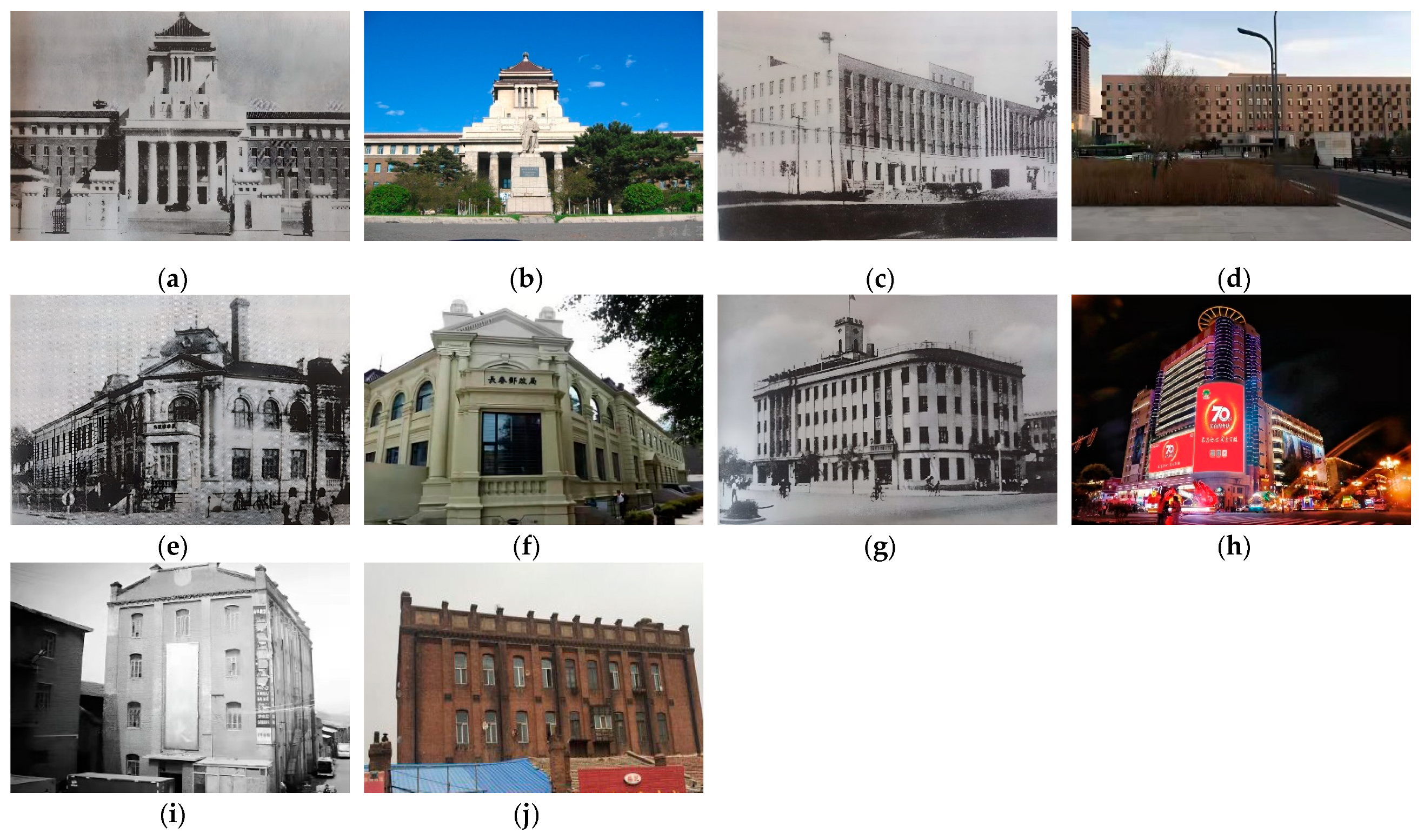
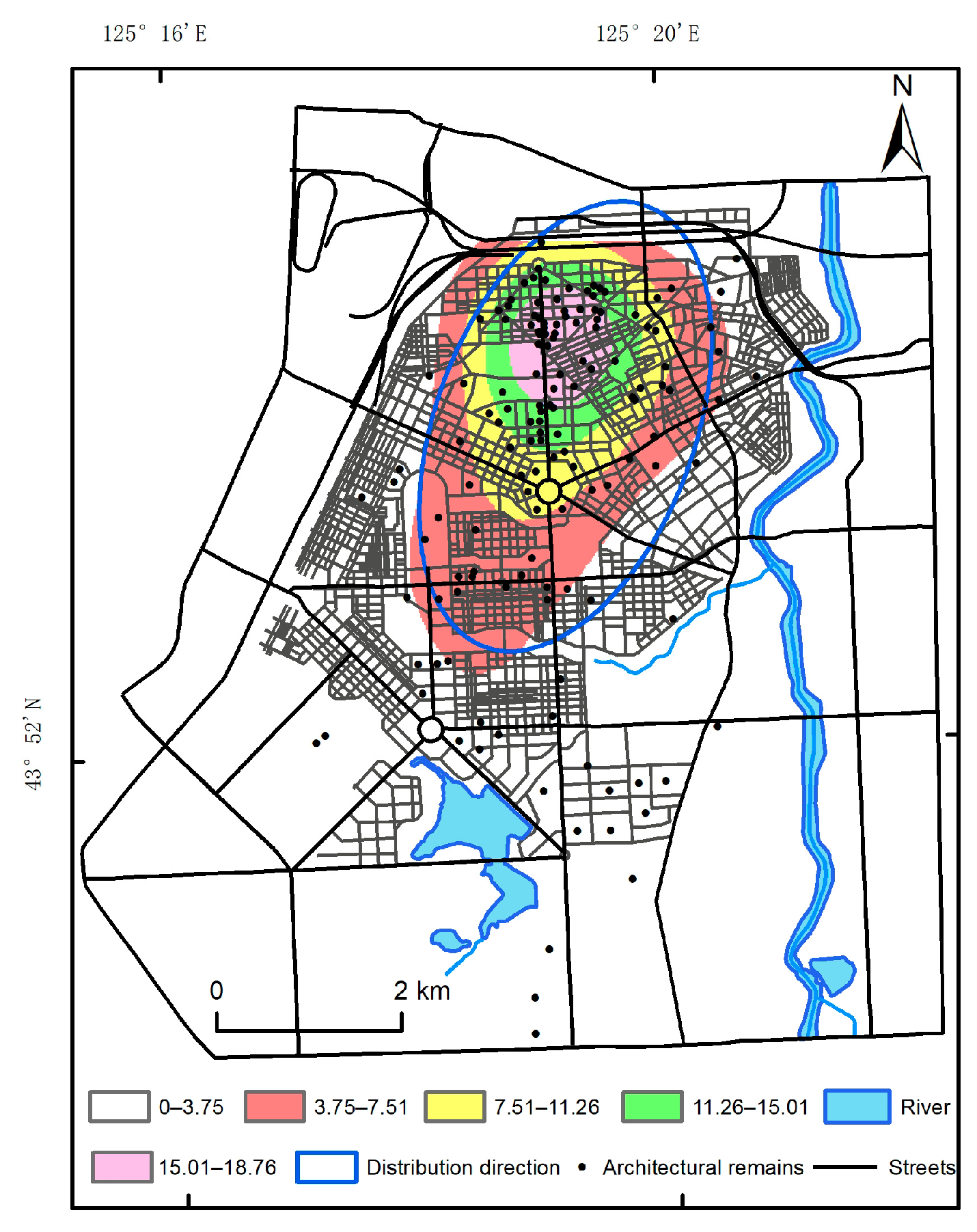

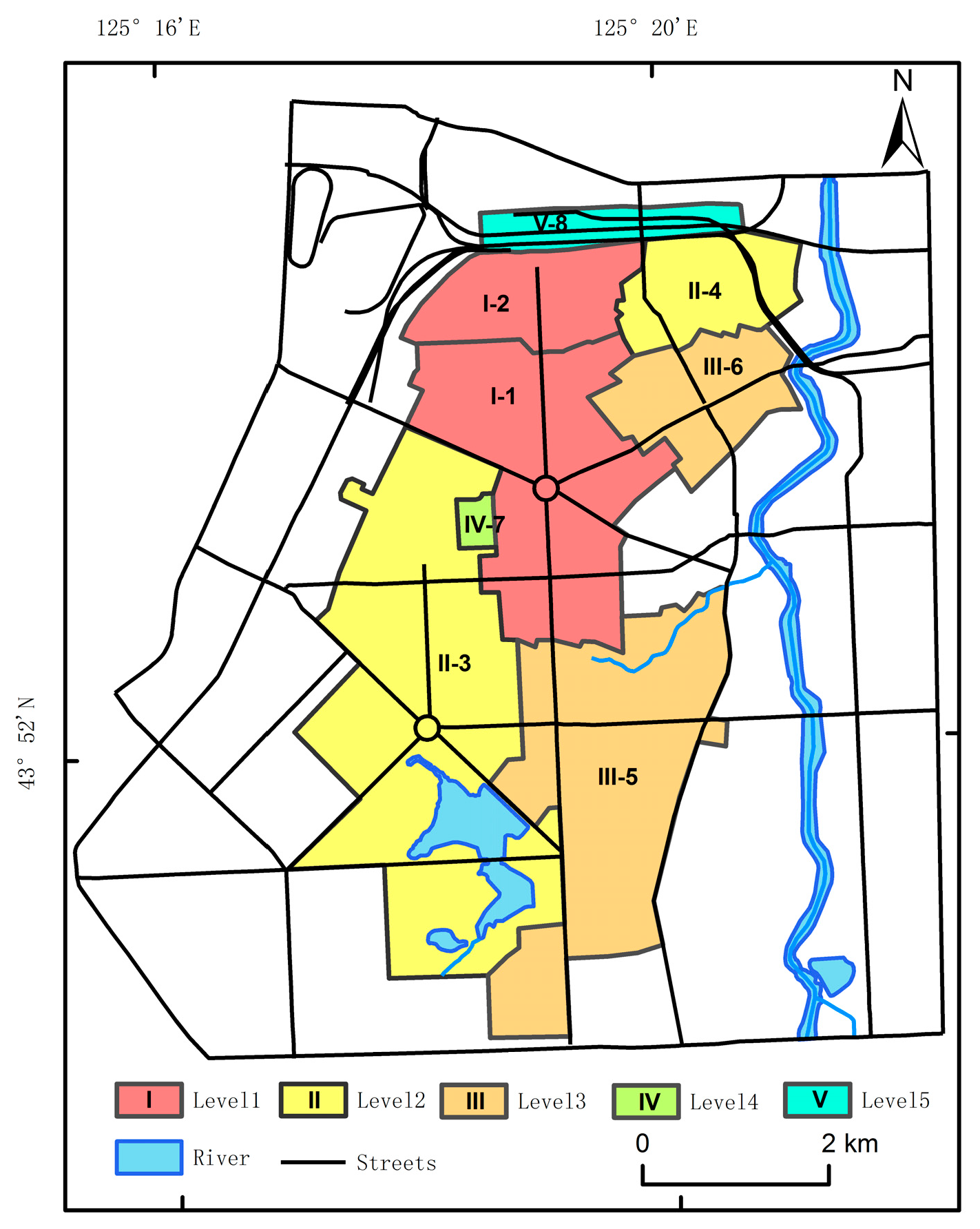
| Initiatives | Year | Originator | Main Content Introduction |
|---|---|---|---|
| Garden city | 1898 | E. Howard | A new type of city with both a good socio-economic environment and a beautiful natural environment |
| Charter of Athens | 1933 | International Modern Architecture Association | The city should be studied as a whole with its surrounding areas of influence |
| Venice Charter | 1964 | The Second Conference of Architects and Technicians of Historic Monuments | Clarify the concept of historical heritage buildings, requiring the use of all science and technology to protect and restore heritage buildings |
| Charter of Machu Picchu | 1977 | The Universidad Nacional Federico Villarreal | For the first time, consideration of the material value of preserving the historic center was introduced, combining economic and cultural values |
| 21st Century Urban Planner Manifesto | 1997 | China Association of City Planning | Cities have entered the era of globalization, cities that are ecologically conscious, cities that are revolutionized by information technology and biotechnology |
| Xi’an Declaration | 2005 | Chinese Commission for the International Council on Monuments and remains | Taking the importance of the environment for heritage and monuments to a new level. |
| Name | Function Classification | Construction Land (km2) * |
|---|---|---|
| Official land (47.0 km2) | Official hall and other homestead land | 6.5 |
| Road land | 21.0 | |
| Public facilities | 3.5 | |
| Parks, sports fields and other land | 7.0 | |
| Military land | 9.0 | |
| Civilian land (53.0 km2) | Residential land | 27.0 |
| Commercial land | 8.0 | |
| Industrial land | 6.0 | |
| Undesignated land | 10.0 | |
| Special land (agriculture, livestock) | 2.0 |
Publisher’s Note: MDPI stays neutral with regard to jurisdictional claims in published maps and institutional affiliations. |
© 2022 by the authors. Licensee MDPI, Basel, Switzerland. This article is an open access article distributed under the terms and conditions of the Creative Commons Attribution (CC BY) license (https://creativecommons.org/licenses/by/4.0/).
Share and Cite
Zhang, J.; Wang, J.; Tao, J.; Tang, S.; Zhao, W. Integrated Zoning Protection of Urban Remains from Perspective of Sustainable Development—A Case Study of Changchun. Sustainability 2022, 14, 5800. https://doi.org/10.3390/su14105800
Zhang J, Wang J, Tao J, Tang S, Zhao W. Integrated Zoning Protection of Urban Remains from Perspective of Sustainable Development—A Case Study of Changchun. Sustainability. 2022; 14(10):5800. https://doi.org/10.3390/su14105800
Chicago/Turabian StyleZhang, Jiawang, Jianguo Wang, Jingmei Tao, Siqi Tang, and Wutao Zhao. 2022. "Integrated Zoning Protection of Urban Remains from Perspective of Sustainable Development—A Case Study of Changchun" Sustainability 14, no. 10: 5800. https://doi.org/10.3390/su14105800






